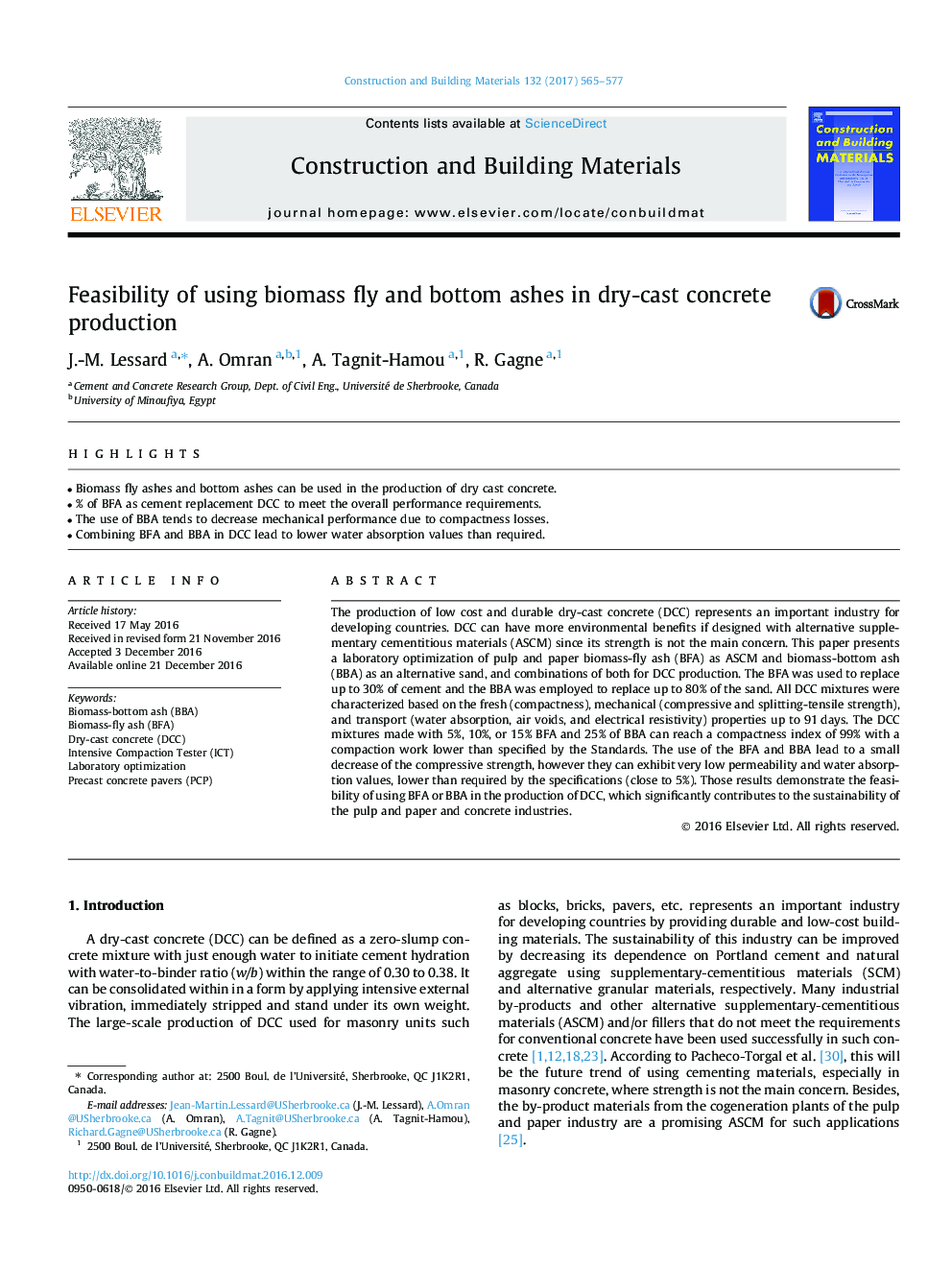| Article ID | Journal | Published Year | Pages | File Type |
|---|---|---|---|---|
| 4913857 | Construction and Building Materials | 2017 | 13 Pages |
Abstract
The production of low cost and durable dry-cast concrete (DCC) represents an important industry for developing countries. DCC can have more environmental benefits if designed with alternative supplementary cementitious materials (ASCM) since its strength is not the main concern. This paper presents a laboratory optimization of pulp and paper biomass-fly ash (BFA) as ASCM and biomass-bottom ash (BBA) as an alternative sand, and combinations of both for DCC production. The BFA was used to replace up to 30% of cement and the BBA was employed to replace up to 80% of the sand. All DCC mixtures were characterized based on the fresh (compactness), mechanical (compressive and splitting-tensile strength), and transport (water absorption, air voids, and electrical resistivity) properties up to 91Â days. The DCC mixtures made with 5%, 10%, or 15% BFA and 25% of BBA can reach a compactness index of 99% with a compaction work lower than specified by the Standards. The use of the BFA and BBA lead to a small decrease of the compressive strength, however they can exhibit very low permeability and water absorption values, lower than required by the specifications (close to 5%). Those results demonstrate the feasibility of using BFA or BBA in the production of DCC, which significantly contributes to the sustainability of the pulp and paper and concrete industries.
Related Topics
Physical Sciences and Engineering
Engineering
Civil and Structural Engineering
Authors
J.-M. Lessard, A. Omran, A. Tagnit-Hamou, R. Gagne,
